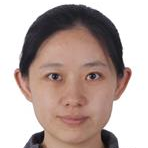Hyperspectral Remote Sensing Technology in Water Quality Evaluation
A special issue of Remote Sensing (ISSN 2072-4292). This special issue belongs to the section "Environmental Remote Sensing".
Deadline for manuscript submissions: closed (31 December 2022) | Viewed by 37347
Special Issue Editors
Interests: hyperspectral remote sensing; data fusion; quality enhancement
Special Issues, Collections and Topics in MDPI journals
Interests: remote sensing of water quality; coastal environments and hazards; sea ice and snow
Special Issues, Collections and Topics in MDPI journals
Interests: computational statistics; data science; machine learning
Special Issues, Collections and Topics in MDPI journals
Interests: optical properties of inland waters; remote sensing of lake environment
Special Issues, Collections and Topics in MDPI journals
Special Issue Information
Dear Colleagues,
The workshop “New Technologies of Hyperspectral Remote Sensing of Water Quality 2021” is an event where the remote sensing scientists can meet and discuss the very technical aspects of our work around water quality techniques in all their variants. To celebrate the second conference, we encourage all participants to be part of this Special Issue of Remote Sensing. The Special Issue calls for papers reporting the newest advances and scientific results in remote sensing technology supporting intelligent water innovation and development. Particularly of interest are submissions summarizing and exchanging the latest research achievements in the theory, method, technology and application of hyperspectral remote sensing of water quality in recent years. Furthermore, development trends of hyperspectral remote sensing technology in intelligent water affairs and innovative applications are also welcome. Topics of interest for this Special Issue include, but are not limited to:
- Remote sensing models of water environments;
- Satellite ground cooperative technology;
- Multi-platform monitoring technology;
- Recognition technology of water color;
- Smart oceans, lakes and inland waters.
Prof. Dr. Yuanzhi Zhang
Prof. Dr. Yi Guo
Prof. Dr. Kun Shi
Prof. Dr. Qian Shen
Guest Editors
Manuscript Submission Information
Manuscripts should be submitted online at www.mdpi.com by registering and logging in to this website. Once you are registered, click here to go to the submission form. Manuscripts can be submitted until the deadline. All submissions that pass pre-check are peer-reviewed. Accepted papers will be published continuously in the journal (as soon as accepted) and will be listed together on the special issue website. Research articles, review articles as well as short communications are invited. For planned papers, a title and short abstract (about 100 words) can be sent to the Editorial Office for announcement on this website.
Submitted manuscripts should not have been published previously, nor be under consideration for publication elsewhere (except conference proceedings papers). All manuscripts are thoroughly refereed through a single-blind peer-review process. A guide for authors and other relevant information for submission of manuscripts is available on the Instructions for Authors page. Remote Sensing is an international peer-reviewed open access semimonthly journal published by MDPI.
Please visit the Instructions for Authors page before submitting a manuscript. The Article Processing Charge (APC) for publication in this open access journal is 2700 CHF (Swiss Francs). Submitted papers should be well formatted and use good English. Authors may use MDPI's English editing service prior to publication or during author revisions.
Keywords
- hyperspectral remote sensing
- inland waters
- smart ocean
- water quality
- satellite remote sensing
- environmental pollution
- online spectrometer
- spectral model
- UAV water quality monitoring









